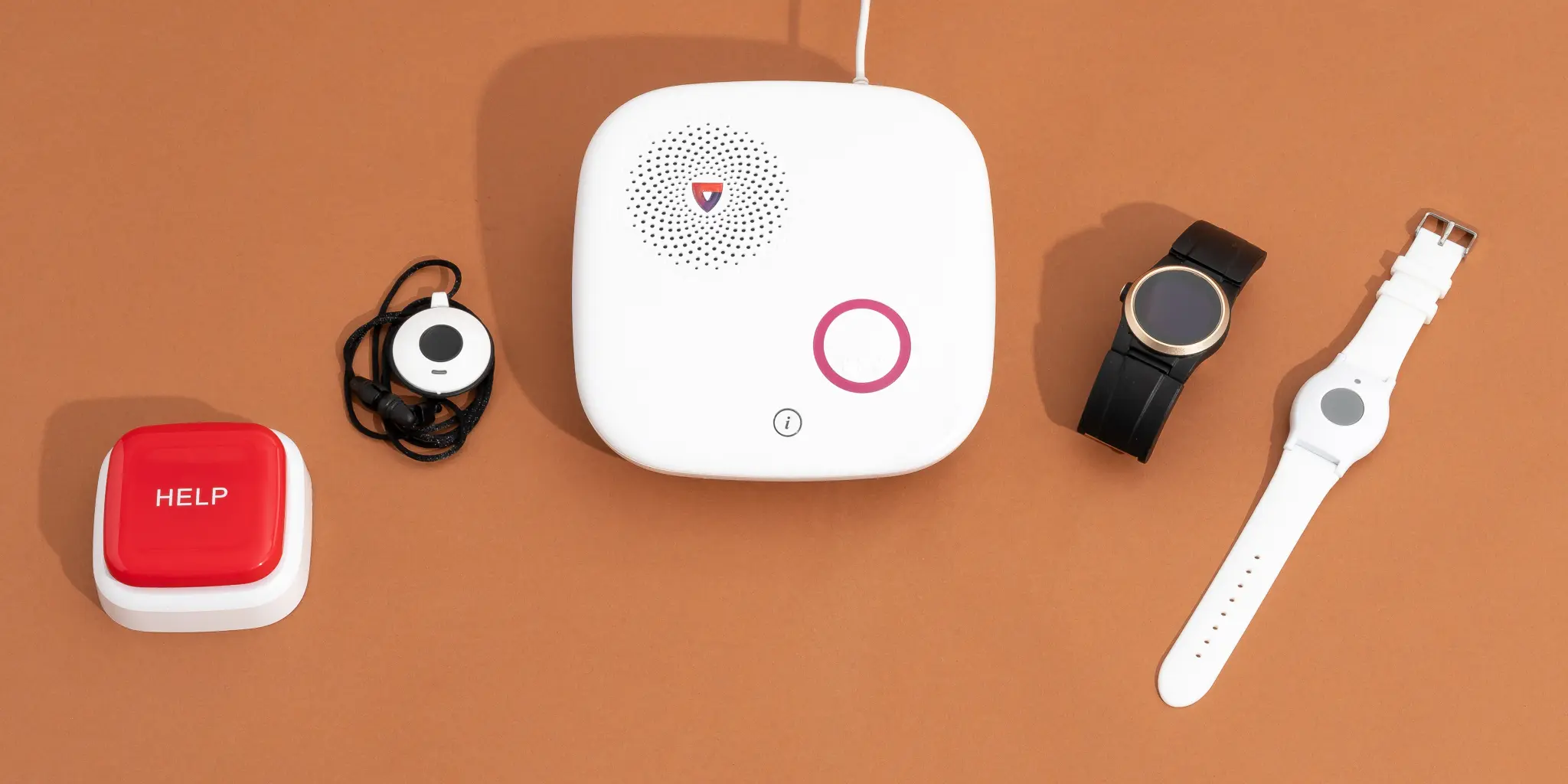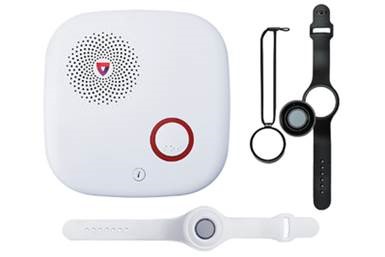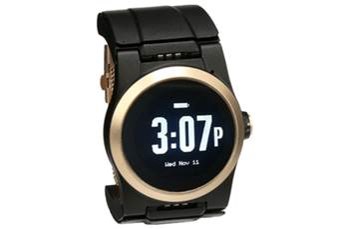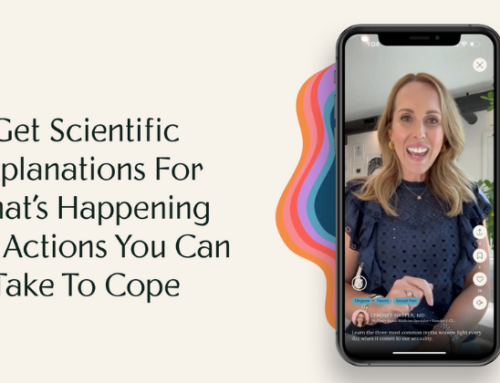After consulting with experts and testing 14 devices, the NY Times recommends the UnaliWear Kanega Watch as a wearable, on-the-go device.
Article Text: For older adults and their loved ones, a medical alert system with on-call emergency operators can give peace of mind—whether it’s providing support after a middle-of-the-night fall or simply getting help from a neighbor, friend, or family member.
After consulting with experts and testing 14 devices, we recommend the Medical Guardian Home 2.0 for a home-based system and the UnaliWear Kanega Watch as a wearable, on-the-go device.
How we picked
- What we looked for
We sought medical alert systems that are easy to use, offer accurate GPS, and have compassionate emergency operators.
- What we ruled out
We didn’t consider companies that aren’t transparent on their websites about their pricing structures or plans.
- What we tested
We tried 14 home-based and on-the-go medical alert systems.
- How we tested
We tested each model for at least a week, evaluating ease of use, operator response time, and more.
In our testing, we found that many medical alert systems are pretty good. If our recommendations don’t appeal to you, take a look at the others we tested.
And if you don’t need on-call emergency support and are more interested in health data such as heart rate, blood oxygen levels, and sleep monitoring, you may want to consider an Apple Watch instead.
Medical Guardian offers a few different medical alert systems, but we liked the Medical Guardian Home 2.0 for its intuitive and unobtrusive design and wearable options (a neck pendant or a wristband). It has a range of up to 1,400 feet, and in our tests it maintained a solid connection because it was connected via 4G LTE through AT&T’s cellular network and Wi-Fi.
Perhaps most important for a medical alert system, the live operators responded quickly and compassionately whenever we pushed the help button on our device.
The monthly fee for this device starts at around $38 (with one wearable pendant), which we found to be pretty typical among similar medical alert systems, but the $150 equipment setup fee was higher than that of many others we tested.
UnaliWear’s Kanega Watch looks like any other smartwatch, but it’s a robust medical alert system that you can use to send an alert by voice or with the push of a button. The UnaliWear emergency and customer service operators were some of the best we encountered during our testing.
Unlike a home-based system, the Kanega Watch can go with you wherever you need it to, whether that’s the shower, the grocery store, or your local park.
It uses Verizon’s network along with Wi-Fi to give full coverage and accurate GPS. And unlike a standard smartwatch (such as the Apple Watch), it has a full staff of trained agents behind it to answer your call—emergency or otherwise—at any time of the day or night.
But with a $299 setup fee and an almost $70 monthly service charge, it’s one of the most expensive options we tested.
Everything we recommend
Our favorite home-based system
Our pick
UnaliWear Kanega Watch
The research
- Why you should trust us
- Who this is for
- Best home-based device: Medical Guardian Home 2.0
- Best on-the-go device: UnaliWear Kanega Watch
- What to look forward to
- How we picked and tested
- Other good medical alert systems
- Why we didn’t test Life Alert
- The competition
- Sources
Why you should trust us
As a long-time independent health and science journalist, I’ve covered a range of topics that impact older adults, including chronic health issues, dementia and Alzheimer’s disease, access to emergency medical care, health disparities among older people of color, and more.
I was a fellow in Columbia University’s Age Boom Academy for journalists covering aging issues. And I have firsthand experience with older relatives who lost their independence due to falls or medical emergencies at home, in and outside of the US.
For this review, I spoke with two occupational therapists and a physician for better insight into barriers that might affect older people using medical alert systems, such as dexterity issues. I spoke with representatives of medical alert system companies to better understand how these devices work and to learn about related privacy and data-security issues. I also talked to people who use medical alert systems and pored over online reviews to see how the devices perform in the real world.
Who this is for
A medical alert system can help you maintain your independence by ensuring that you can get help when you need it—whether you’re at home or out and about. Unlike a smartphone or smartwatch, these systems provide an extra layer of support during health and other emergencies by providing representatives on the other end who can help you or a loved one navigate emergencies.
When an older person needs help, it doesn’t always warrant a 911 call. Often support from a neighbor or friend would suffice. And when a person is experiencing a medical emergency and dials 911, it’s not always easy for a 911 operator to interpret a hang-up call or understand the caller’s medical history, especially if they’re unable to speak; that’s what can make a medical alert system a lifesaver.
We focused on devices for two main groups of adults:
- people who need a medical alert system only for use in their home (and who don’t want to futz with the technology)
- people who want a wearable device for inside and outside their home (and who may be more comfortable with technology)
However, older adults aren’t the only people who can benefit from these devices. Those with certain disabilities or chronic health issues may find the added security of a medical alert system with a dedicated call center helpful, whether temporarily after an injury or surgery or for a longer period.
Medical alert systems can also provide caregivers, including adult children, invaluable peace of mind. If your caregiver is helping you from across the country or even just across town, it’s helpful for them to know when you need to use your medical alert system and to hear from a live agent.
Depending on your preferences, some companies may call or text your designated caregiver or emergency contact to notify them if the medical device alert system has been activated, if the battery is low, or if the device hasn’t been used in a while.
These systems can be costly, so be sure to ask your insurance provider if it covers them. If you have a flexible spending account or a health savings account, you can use income-tax-free money to help pay for certain devices.
When it comes to pricing, many of the better medical device companies have fees that can add up. If you’re on a tighter budget, keep in mind that some companies advertise promotional or locked-in discounted rates. If you’re a veteran who receives services from the Department of Veterans Affairs, for example, you can obtain a medical alert system through your VA provider at no out-of-pocket cost to you.
Best home-based device: Medical Guardian Home 2.0
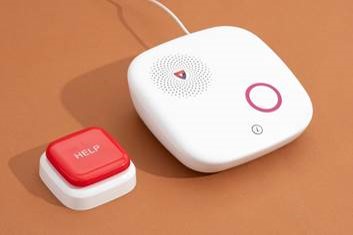
Photo: Michael Murtaugh
Our pick
Medical Guardian Home 2.0
Our favorite home-based system
An intuitive design, the option of a neck pendant or wristband with a 1,400-foot range, and a responsive call center make this a standout home-based system. The initial setup fee is on the higher end, though.
The Medical Guardian Home 2.0 includes a base unit and two wearable options, a neck pendant or a wristband. Its compact design and quick operator-response times make it the best option for older people or anyone with medical conditions who wants a simple system to use at home.
Its operators respond quickly. The live operator call-response times were among the fastest of the models we tested, as they answered 30 to 45 seconds after we pushed the button—more than a full minute before some competitors. The operators were consistently pleasant, professional, and all based in the US. Depending on your individual emergency plan, if you don’t respond verbally to the base unit after sending an alert, an agent will call your cell phone within minutes, following that with a call to your emergency contacts and/or 911 responders. I also liked that the agents called to notify me when my device’s battery was low and to check in after I didn’t use the device for a week.
It’s sleek and compact. The base unit looks more like a smart speaker than a medical device. With a 6.4-inch square frame, it doesn’t take up much more counter space than a smartphone. We like that the wearable necklace and wristband come in black or white, but as with most home-based systems with pendants, it’s hard to disguise that you’re wearing a medical device.
The neck pendant is easy to put on. The snap mechanism on the pendant was easier to use than the design of others we tested; it would be helpful for anyone with limited dexterity.
It has a backup battery in case of a power outage. Like most home-based devices, the base unit plugs into the wall. But if the power goes out, you’re still covered because the backup battery activates when the power disconnects, and it lasts for 32 hours—on the longer side of the models we tested.
It has an online portal and caregiver app. Medical Guardian has an app that allows caregivers access to information on emergency calls, device usage, battery charge information, and more. (Surprisingly, many of the companies whose models we tested don’t have well-developed apps for their home-based systems.) The Medical Guardian app sends a real-time alert whenever the emergency button is activated; if a caregiver doesn’t want to use the app, they can opt in to receiving a phone call or text instead.
It comes with a generous protection plan on top of the warranty. Medical Guardian offers a limited warranty to cover defects as long as you have an active service plan, a standard policy across the models in our test group. An optional protection plan costing about $7 per month covers the replacement of one base unit and two wearables per year, including shipping costs, if your device has any technical issues, normal wear and tear, water damage, or loss. This was the most robust protection plan we saw offered by any of the companies whose systems we tested.
It has no cancellation fees. Unlike many medical alert system companies, Medical Guardian does not charge cancellation fees, and you don’t have to buy into a long-term contract. If you need to cancel, the company will refund you a prorated amount for any unused service.
Other things to note
Like other home-based systems, the Medical Guardian Home 2.0 comes with an interchangeable button that you can place in a neck pendant or wristband and wear around your home so that you can send an alert for help even if you’re not in the same room as the base unit. Though the system’s range is technically 1,400 feet from the base, the distance could be shorter depending on interference from walls and other barriers.
The emergency buttons on the base, pendant, and wristband were easy to press, but not so easy that they set off a false alarm. Across the home-based medical alert systems we tested, the wearable pendants appeared almost identical. You can also add on a wall button to place in high-risk areas like the bathroom. The wearable components are water resistant, so you can wear them in the shower or while exercising, but you should not submerge them in a bathtub or pool.
The device connects over Wi-Fi as well as 4G LTE through AT&T’s cellular network, but you don’t need to have an AT&T phone plan to use it.
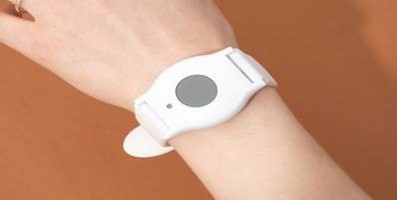
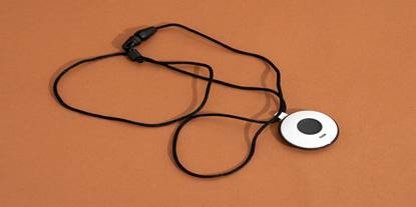
The Medical Guardian Home 2.0 comes with a portable button that you can snap into a wristband for easy access when you’re moving around your home. Photo: Michael Murtaugh
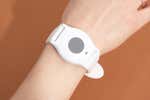
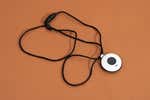
Flaws but not dealbreakers
- The device’s one-time equipment fee of about $150 is slightly higher than that of other models we tested.
- You can speak with an agent only through the base unit, not the wearable necklace or wristband, so if you are in a different room from the base unit, you may not be able to verbally communicate with the live operator. This is a major flaw of all home-based systems that have both plug-in and wearable components. If Medical Guardian’s call center reps don’t hear a response from you, they can notify your emergency contacts and/or 911, depending on the plan you set up ahead of time.
- It didn’t pick up my simulated falls during testing. However, we also found that fall detection isn’t 100% accurate on any device. If you want this feature, you need to buy the fall-detection pendant instead of the standard pendant for an extra $10 a month, which is a fairly standard rate among the models we tested.
- We found that the base device scuffed easily and was hard to clean.
Best on-the-go device: UnaliWear Kanega Watch
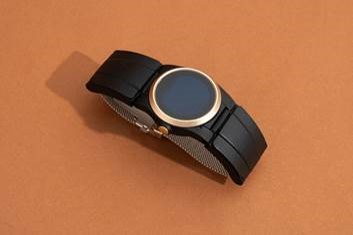
Photo: Michael Murtaugh
Our pick
UnaliWear Kanega Watch
One of the most attractive wearable systems we tried also comes with some of the best call center support and customer service. Its up-front costs are high, though.
UnaliWear’s Kanega Watch is an attractive medical alert system that looks like a smartwatch. Its unobtrusive and stylish design makes it best for someone who wants a medical alert device that doesn’t look like one and who wants to be able to take it with them when they leave home.
Its live agents and customer service are very responsive. This company takes its live operator call-response time, communication with caregivers, and general customer service seriously, and it shows. The emergency and customer service operators were among the best and fastest we encountered in our testing, consistently responding within 30 to 60 seconds of our call, whereas other mobile options had more variable length times.
It’s stylish and fun. The style and comfort of the Kanega Watch distinguish it from every other dedicated medical alert system we tested. Apart from the Apple Watch, the other smartwatches in our test group were bulkier and less customizable. The watch face and clasp on the Kanega Watch come in three colors: black, champagne gold, and rose gold. The wristband is customized to your wrist size when you order it, and you can adjust it even more precisely when you receive it.
Its GPS is accurate. Although it may sound obvious, accurate GPS in a medical alert system is of the utmost importance. More than any other on-the-go device we tested, the Kanega Watch was the most accurate at pinpointing my location when I called the live agents for help. Other devices we tested, such as the ADT On-The-Go and Bay Alarm Medical SOS All-In-One, frequently had my location off by half a block.
It can remind you to take your medications. The Kanega Watch and the Apple Watch are the only devices we tested that have an included feature to remind you to take your medications. (Some other systems offer it for an extra fee.)
It comes with fall-detection capabilities. Though fall detection is never going to be 100% reliable in any device, the Kanega Watch detected all of my simulated falls during testing. It sometimes skewed to the overly sensitive side, but you can adjust it by asking customer service to recalibrate the fall-detection settings to tailor them to your activity level, whether you’re playing tennis, moving items around your home, or staying supine while recovering from a surgery. The watch also learns from past false alarms. And unlike almost all the other medical alert systems we tested, it doesn’t impose an extra fee for fall detection.
Calling for help is easy. The device makes contacting live agents simple: You can either push a button or verbally tell the watch you need help, and it will connect you with one of the company’s emergency operators. If you do not verbally respond after you’ve been connected, the agent will contact emergency services and a designated contact within a specified time period. While the other smartwatch-type devices we tested also allow you to connect to live agents via button or voice, the process was quicker and more seamless with the Kanega Watch.
Other things to note
The Kanega Watch has a large, easy-to-read screen, which is particularly useful for people who have trouble reading smaller type sizes. In my tests, its call quality was crystal clear, and I never had trouble hearing the operator, even when I was outside on busy city streets. If you have hearing loss, you can contact the company’s customer service team to create a personalized sound level tailored to your hearing ability.
Like all the medical alert systems we tested, the device is resistant to running water, so you can wear it in the shower or while you’re exercising, but you should never submerge it in water. UnaliWear has a limited warranty to cover defects as long as you have an active service plan. If you don’t like the Kanega Watch, you can return it within 30 days of the shipment date for a full refund, but note that you have to pay a $75 restocking fee.
The device connects over Wi-Fi and 4G LTE through Verizon’s cellular network, but you don’t need to be a Verizon customer or buy a separate plan to use it.
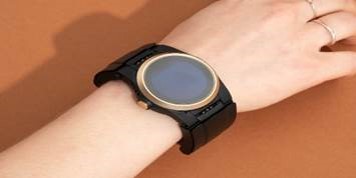
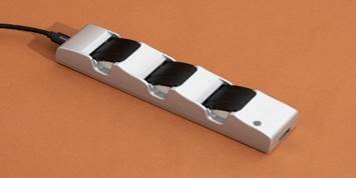
The Kanega Watch’s face and clasp come in three colors, and the wristband is customized to your wrist size. Photo: Michael Murtaugh
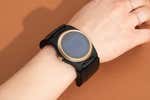
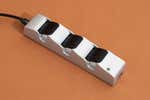
Flaws but not dealbreakers
- The Kanega Watch’s fall-detection and voice-recognition technology can be too sensitive, leading to false alarms. But you can call the company and ask a customer service representative to adjust the device’s sensitivity.
- Changing the batteries in the device may be challenging for some people with memory issues or limited dexterity. The watch comes with four lithium ion batteries, two of which can always be charging in the included battery charger. When the batteries in the watch lose charge, you’re supposed to swap them out for the fully charged batteries, which you can do without removing the watch from your wrist. The batteries last for 24 to 36 hours, so the company recommends doing this daily, which could be challenging for someone with memory loss to do. We also saw complaints in online reviews indicating that the process of snapping the batteries into the wristband was physically difficult for those with fine motor issues.
- The one-time setup fee—$299 if you do the monthly plan or $199 if you go with the annual plan—is one of the highest of the medical alert systems we tested.
What to look forward to
The wearable Silvertree Reach came out just as we were finishing testing devices for this guide. We plan to include it in our next round of testing.
How we picked and tested
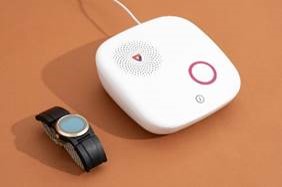
The Kanega Watch (left) is our favorite on-the-go medical alert system, while the Medical Guardian Home 2.0 (right) is our home-based pick. Photo: Michael Murtaugh
If you’re looking for a reliable home-based or mobile medical alert system, it can be hard to know where to start. With a dizzying array of options for subscription plans and add-on features, the right medical alert system for you depends on your daily habits, needs, and abilities.
We spent over 50 hours researching, evaluating, and testing 14 medical alert systems. These are the essential features we looked for:
- Compassionate emergency operators: We wanted companies with live agents who were helpful, kind, and patient with anyone who called—especially for those who may need technical support.
- Easy to use: We prioritized medical alert systems that had buttons that were intuitive and easy to press and that would be accessible to those with dexterity issues, even during an emergency.
- Simple setup: We looked for medical alert systems that were intuitive to get up and running, including basic tasks like unboxing the device and charging it.
- Responsive customer service and a good warranty: We prioritized companies that had live, human customer service agents who were easy to reach, interested in resolving the problem, and able to offer accessible support over the phone. We looked for warranties of at least a year.
- Accurate GPS capabilities: Particularly for on-the-go devices, it’s crucial that the GPS is accurate when pinpointing the wearer’s exact location (though many devices still do not guarantee GPS capabilities with 100% accuracy).
- Good call quality and adjustable volume: We looked for devices that would be loud enough to hear from another room.
- Decent range: We sought home-based devices that had a range of at least 300 feet—preferably 600 feet—so that a person could still call for help using their wearable device when they’re in a different room from the base unit.
- Clear and up-front pricing: Confusing pricing structures are unfortunately a hallmark of the medical alert industry, so we prioritized companies that were up front about their fees and offered flexible contracts.
- Aesthetically pleasing and discreet appearance: Many people do not want devices that look like, well, medical alert devices, so we prioritized options that looked discreet or resembled a smartwatch.
- Fall detection: Fall detection is not 100% accurate on any device, and it often comes with an extra fee. That said, it’s useful for many people, so we looked for models that offered this feature.
- No landline required: Though some people may prefer landline-compatible options at home, many no longer have landlines, so we focused on models that operate through a cellular connection (which doesn’t mean that you must have a cellular plan with that provider, just that you receive good service in your area). It’s important to know that GPS-enabled cellular-connected medical alert systems should be at least 4G LTE; older models are no longer supported.
I tested each medical alert system for a minimum of one week. I set up the mobile devices and the home-based systems, paired them with their wearable component if they had one, and noted how straightforward the setup was.
I wore each device throughout my typical day, taking the mobile devices with me on the bus or train going back and forth from Queens to Manhattan, and doing daily tasks like picking up my youngest child from school, running errands, or even going for walks in my local park.
I randomly activated each device throughout the day and night to see how long an agent took to answer my call and how friendly and helpful they were. I would then ask the agent to tell me where I was to test the device’s GPS to-the-minute capabilities.
For the home-based units, I walked around my home with the wearable component to measure how far I could get from the base unit while maintaining a connection and communicating with the emergency operator. I explored and assessed the accessibility features and settings for each medical alert system, taking into consideration the needs of older and disabled people who may use it.
Other good medical alert systems
Most of the medical alert systems we tested did their job well. So although our picks are the best choices for home-based and mobile medical alert systems, we recognize that they may not work equally well for everyone. Here are some others we liked:
If you want an alternative home-based medical alert system: The ADT Medical Alert Plus has an easy plug-in setup, with no landline or installation required. The pendants have a 600-foot range from the base unit, and its backup battery lasts up to 30 hours after a power outage. It’s best for those who want a home system that they can attach to the wall in a central location, while wearing a corresponding pendant or wristband that’s paired with the base unit. The device can also monitor the room’s temperature, and for an extra fee, you can add fall detection. However, we found that the device connected more slowly to a live operator than others we tested; my longest wait time was two minutes.
If you’re looking for a medical alert system you can use outside but don’t want a smartwatch: Try ADT’s On-The-Go, Bay Alarm Medical’s SOS All-in-One, or Medical Guardian’s Mini Guardian.
ADT’s mobile option, the ADT On-The-Go, is a small, mobile device that you can use at home or outside. Like the home-based systems, the mobile base unit pairs with either a neck pendant or wristband, and you can add fall detection for an additional monthly fee. But I found that its GPS capabilities were hit-and-miss when I was outside.
The Bay Alarm Medical SOS All-In-One is a small, no-frills, GPS-enabled mobile device that offers access to emergency help with a long-lasting battery life of 72 hours. The system comes with an app for caregivers, which allows them to monitor the wearer’s location and if the device’s battery is running low. (We recommend always getting the consent of the person wearing the device before setting up any kind of location tracking or monitoring, if possible.) Although Bay Alarm Medical’s GPS capabilities usually came close to my current location, they weren’t entirely accurate when I was out and about. We like that the company offers attractive pendant covers to conceal the device, but the additional $25 charge is hefty.
If you want a thin, sleek medical alert device, consider the Medical Guardian Mini Guardian. I found that it could pinpoint my location accurately, and its five-day battery life impressed us. We like that it comes in black, white, and silver, and it has optional add-ons, including a waterproof wall-mount button and a fall-detection pendant. It’s one of the thinnest and most compact devices.
If you have an iPhone and don’t need live operators on standby: The Apple Watch Series 8 isn’t a medical alert system per se, since it doesn’t have dedicated agents standing by, but it does allow you to easily call emergency services via voice command (“Hey Siri, call 911”). You can use an Apple Watch only if you have an iPhone to pair it with (though that phone can belong to a member of your family or household). The up-front cost is high for a cellular-enabled watch at about $500, but monthly plans typically cost only around $10 a month (excluding the cost of an iPhone and its monthly cellular service). The watch has a wide array of robust health-data collection capabilities, including wrist temperature, blood-oxygen levels, heart rate, sleep monitoring, respiratory rate, arrhythmia detection, and ECG features. GPS capabilities are standard on every Apple device. Older people and those with hand-dexterity issues may have some trouble working the too-small button knobs on the side of the watch, but you can get around that by using voice-activated commands via Siri. Fall detection, although not 100% reliable, is included with the watch and is automatically enabled if you’re over the age of 55.
If you’re looking for a smartwatch-like medical device: Consider the Medical Guardian MGMove and the LifeStation Sidekick Smart.
The Medical Guardian MGMove is an attractively designed, water-resistant smartwatch, and it doesn’t look like a medical device. It offers many features, including time, weather, and step tracking; for an additional monthly fee, it offers medication and appointment reminders and a messenger app to communicate with caregivers or emergency contacts. But the device’s main purpose is to make it simple to get emergency help. It’s easy to use and charge, and its GPS is very accurate.
The LifeStation Sidekick Smart is a great mobile choice if you want convenience and affordability. The display is large and easy to read. The device has one of the fastest automated response times, after which it connects you to a live operator in less than two minutes. The sound quality is clear, and it has a sensitive microphone for speaking voice-activation commands and communicating with live operators. But when it came to LifeStation’s GPS capabilities, we were less impressed. Sometimes when I called, the operator would automatically assume that I was at my home location, even if I was out and about, and they were not always able to tell me my current location.
Why we didn’t test Life Alert
We decided not to test models manufactured by Life Alert, one of the most well-known pioneers of medical alert systems. Founded in the 1980s, this brand is synonymous with medical alert systems. Confirming current prices with company representatives was challenging, however, and they’re not readily available on its website.
According to online reviews, Life Alert’s concierge service is attentive. But when it comes to the actual monthly costs and add-ons, the company’s website is vague on details. And Life Alert requires customers to sign a 36-month contract that can be broken only if the customer goes into full-time care or dies.
The competition
We no longer recommend a former pick, the Lively Mobile+. Conversing with customer service by phone or email was surprisingly difficult, before and after we purchased the device. The device did not register anything during our fall-detection tests, and an on-call nurse service was supposed to be available for an additional fee, but since I could never reach customer service to set that up, I was unable to test the service. Longtime customers have complained online that previous iterations of this Lively model were better years ago but that the service has gone downhill since.
The LifeStation In Home came with too many problems to recommend. I tested two different devices, and both stopped working soon after I received them. Customer service seemed uninterested in helping me with the technical issues, and it took several tries to get a replacement.
The MedEquip Alert is a compact, peanut-shaped device that works almost immediately after you plug it in to charge. It could be a good option for qualifying US military veterans, to whom the company provides this system for no out-of-pocket cost. The device was unnecessarily hard to purchase in the first place, but once I had it, the emergency agents were always pleasant and professional. Though the device offers fall detection, it did not detect any falls during my testing. We found pressing the alert button a little difficult; it could be a challenge for those with hand-dexterity issues.
Like the Apple Watch Series 8, the AppleWatch SE is not a medical alert device with live agents. As is the case with any Apple Watch model, you or someone in your family or household needs to have an iPhone to pair the Apple Watch with in order for the device to be operational. If your top priority is ease of use and at-your-fingertips health data, the Apple Watch 8 may be a better choice.
This article was edited by Claire Perlman and Christine Cyr Clisset.
Sources
- Richard Milani, MD, chief clinical transformation officer at Ochsner Health System, phone interview, June 16, 2023
- Jasun Fiorentino, developer of the MedEquip Alert, phone interviews, March 23, 2023, and June 14, 2023
- Regula H. Robnett, PhD, OTR/L, gerontologist and professor emeritus at University of New England, phone interview, June 15, 2023
- Lynda S. Lemisch, OTD, OTR/L, CLCP, CAPS, assistant professor of occupational therapy at Saint Joseph’s University, email interview, June 15, 2023
- Richard Hirsch, MBA, chief marketing officer at UnaliWear, phone interviews, March 23–24, 2023, and email interview, March 23, 2023
- Matthew Guerrieri, chief marketing officer at Medical Guardian, phone interview, April 3, 2023, and email interview, July 5, 2023
- Howard Teicher, vice president of Healthcare & Business Development at Medical Guardian, phone interview, April 3, 2023, and email interview, July 5, 2023

